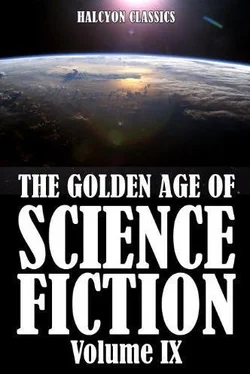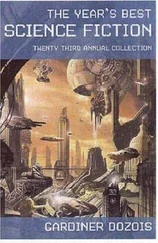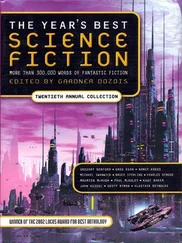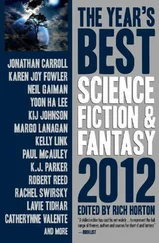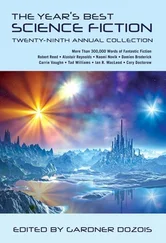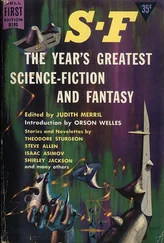From the 50,000,000 square miles of land upon the earth must be deducted the very large areas which are frozen during the greater part of the year, and also the large areas which are deserts or bare rocks. This would probably bring down the really habitable area to about 30,000,000 square miles.
Making a similar deduction in the case of Mars, but remembering that more of the regions near the poles would be habitable during part of the year than is the case on the earth (as there is practically no permanent glaciation and the temperate zones extend nearly to the poles) the habitable area would be reduced to, say, 15,000,000 square miles.
It will thus be seen that although the total surface area of Mars is only rather more than one-quarter of that of the earth, the area of its habitable land, even under its present unfavourable circumstances, amounts to about half of the habitable area of the earth.
Looking at Mars from this point of view, it does not contrast so unfavourably with the earth as is usually thought, especially when it is remembered how small a proportion of the earth’s area is really populated.
Were it not for the great eccentricity of the planet’s orbit, the seasons upon Mars would be very much the same in the different zones as they are on our world, as the inclination of the planet’s equator is only very slightly less than that of the earth. According to the latest determination, the inclination in the case of Mars is 23° and 13’.
As the Martian year is nearly twice as long as ours (being 668 Martian days, which are equal to 687 of our days) the seasons are of course proportionately longer in duration. The eccentricity of the orbit, however, causes a much greater difference between the lengths of summer and winter in the two hemispheres.
* * *
In the northern hemisphere of Mars, spring lasts 191 Martian days; summer, 181 days; autumn, 149 days; and winter, 147 days.
In the southern hemisphere spring lasts 149 days; summer, 147 days; autumn, 191 days; and winter, 181 days.
Thus, in the northern hemisphere spring and summer together amount to 372 days, and autumn and winter to 296 days.
In the southern hemisphere, however, spring and summer have 296 days, whilst autumn and winter last 372 days; so that the winter period of the year is 76 days longer than in the northern hemisphere.
On the earth the winter portion of the year is seven days longer in the southern hemisphere than it is in the northern hemisphere.
For this reason, our south polar snow-cap is larger than the north polar cap; and we should naturally expect to find a similar condition upon Mars, only greatly accentuated. Astronomical observation shows that this is the case, for while the northern snow-cap on Mars attains a maximum diameter of slightly under 80°, the southern snow-cap attains a maximum diameter of over 96°. The snow-caps are not perfect circles, but irregular in shape, and are, moreover, not exactly opposite to each other.
Notwithstanding its much greater area the southern snow-cap melts to a greater extent than the northern snow-cap does, owing to the intensity of the heat at the melting period. The northern snow-cap usually melts until the diameter is reduced to about 6°, whilst the much larger southern cap may be reduced to about 5°. In the year 1894 it disappeared entirely! The summer must have been unusually hot.
So far as can be gathered from the records of our whaling and polar expeditions, it would appear that our north polar snow-cap is from 20° to 30° in diameter when at the minimum; whilst the southern snow-cap is nearly 40° in diameter when smallest.
* * *
We had arrived upon Mars on the 24th of September 1909, according to terrestrial reckoning; but according to the Martian date it was then the 26th of June in the southern hemisphere, where Sirapion, our landing-place, is situated. The season was, therefore, midsummer, and as Sirapion is in latitude 25° south and in the sub-tropical zone, the temperature was fairly high. The mornings were much more clear and brilliant than those on our earth; the warmth and general “feel” of the air at that time reminding me very much of what it is like in the south of England between seven and eight o’clock on a hot sunny day. Those who enjoy an early morning walk know how delightful and exhilarating it becomes towards that time. There is neither chilliness nor uncomfortable heat; one feels a delightful sense of freedom and that it is good to be alive. This is really the best and most enjoyable time on a summer’s day. On Mars there was rather more warmth but a greater sense of exhilaration. Of course, from near noon to about 3 P.M. it was much warmer.
Usually a lovely rosy effulgence is seen in the atmosphere in the mornings and evenings. As a rule, sunrise and sunset effects are much more ethereal and more beautiful than those on the earth, the tints being more delicate and the whole appearance of the sky less broadly marked. It is as the difference between the crude broad effects of a coloured poster and the delicate effects of a highly-finished painting.
What, in our sunsets, would appear a deep golden colour appears on Mars as a delicate pale gold, merging into bright silver. What with us is a carmine or deep rose, in Martian skies becomes a beautiful rose-pink; whilst the darker, or Indian, red seen for some time at the latter period of our sunsets is carmine in the Martian sky, and Indian red only appears just at the last.
These tints are seen when the skies are of their normal clearness, but after the occurrence of a great sand-storm in the desert and the upper air has become filled with fine sand particles, the Martian sunsets are equal in variety and depth of colour to anything seen on our earth during the months immediately succeeding the Krakatoa eruption. Those strange and intensely coloured sunsets will doubtless be remembered by my readers who had the good fortune to see them during the many months when they were visible after that great volcanic outburst in the year 1883.
Sand-storms have been unusually prevalent on Mars during the present summer, passing over large areas of country and obscuring the sun for considerable periods; so we have had several phenomenal sunsets afterwards.
As the time passed on the days became cooler—the evenings being considerably more so than on our earth in August, and twilight was very much shorter. Towards the end of the Martian August evening dews began to be succeeded by slight hoar frosts.
The heat in the tropics is not nearly so intense as on the earth. On the other hand, in the high latitudes near the poles, the summer temperature is higher than in similar latitudes on the earth, because upon Mars there is no permanent glaciation except right at the poles.
We have, of course, seen the Martian polar stars. The axial tilt of the planet being less than that of ours, and in a different direction, and its orbit being inclined 1° and 51’ in regard to the earth’s orbit, it follows that the poles of Mars must point to a different part of the sky, and a considerable distance from our polar stars.
In the northern hemisphere of Mars the polar star is a small one marked on our maps in the constellation of Cepheus, and it is almost on the boundary between that constellation and Cygnus. The pole star lies nearly in a line joining the brighter stars [alpha] Cephei and [alpha] Cygni.
The south polar star is a small one marked [symbol] in that part of the large constellation of Argo Navis which is termed Carnia.
Although the polar stars are very small, they shine more brightly in the Martian skies than the north polar star does to us, and are therefore more easily seen.
CHAPTER XXV
MANY THINGS SEEN UPON MARS—I RECEIVE SOME NEWS
Читать дальше
